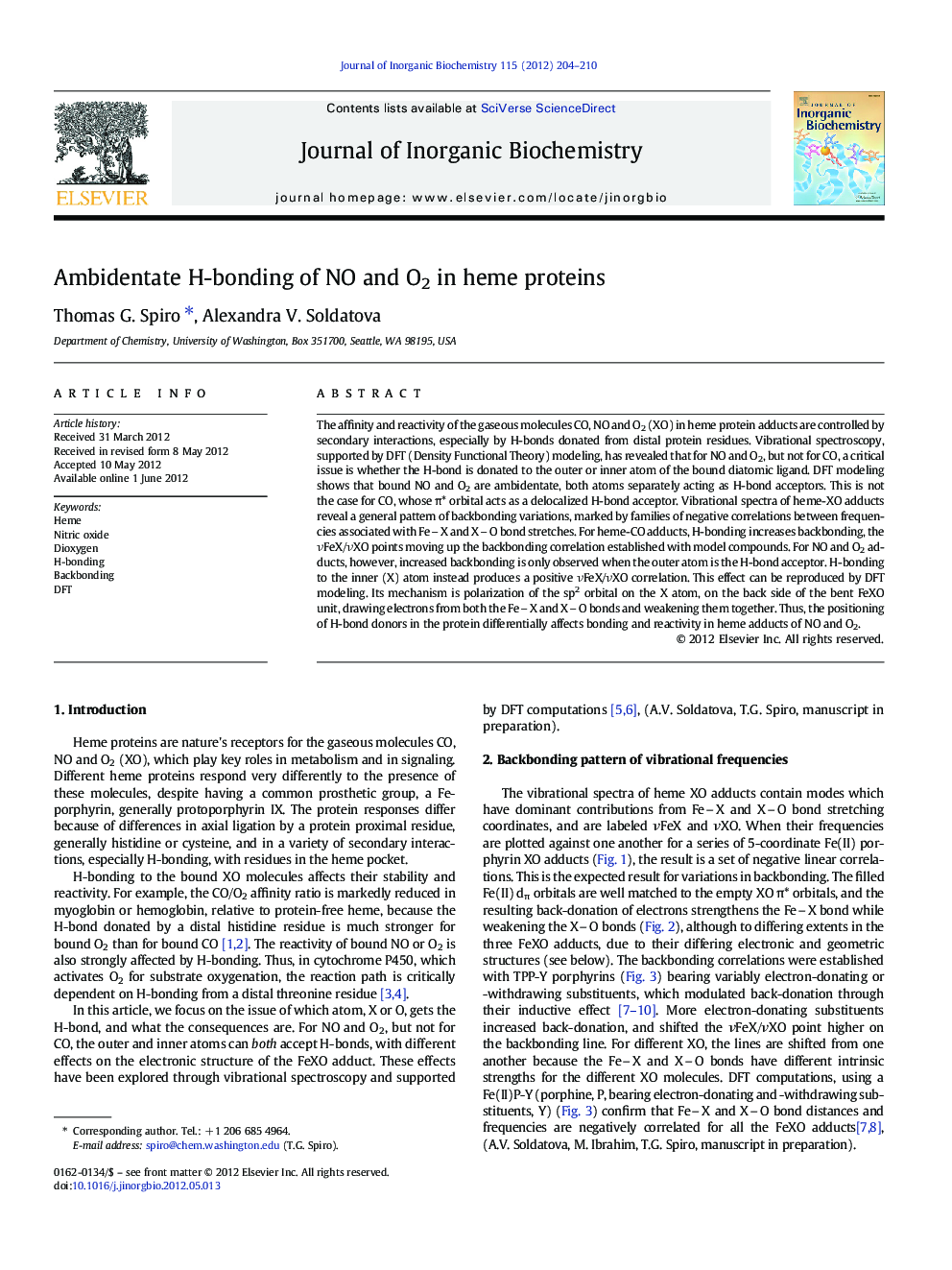| Article ID | Journal | Published Year | Pages | File Type |
|---|---|---|---|---|
| 1316395 | Journal of Inorganic Biochemistry | 2012 | 7 Pages |
The affinity and reactivity of the gaseous molecules CO, NO and O2 (XO) in heme protein adducts are controlled by secondary interactions, especially by H-bonds donated from distal protein residues. Vibrational spectroscopy, supported by DFT (Density Functional Theory) modeling, has revealed that for NO and O2, but not for CO, a critical issue is whether the H-bond is donated to the outer or inner atom of the bound diatomic ligand. DFT modeling shows that bound NO and O2 are ambidentate, both atoms separately acting as H-bond acceptors. This is not the case for CO, whose π* orbital acts as a delocalized H-bond acceptor. Vibrational spectra of heme-XO adducts reveal a general pattern of backbonding variations, marked by families of negative correlations between frequencies associated with FeX and XO bond stretches. For heme-CO adducts, H-bonding increases backbonding, the νFeX/νXO points moving up the backbonding correlation established with model compounds. For NO and O2 adducts, however, increased backbonding is only observed when the outer atom is the H-bond acceptor. H-bonding to the inner (X) atom instead produces a positive νFeX/νXO correlation. This effect can be reproduced by DFT modeling. Its mechanism is polarization of the sp2 orbital on the X atom, on the back side of the bent FeXO unit, drawing electrons from both the FeX and XO bonds and weakening them together. Thus, the positioning of H-bond donors in the protein differentially affects bonding and reactivity in heme adducts of NO and O2.
Graphical abstractThe positioning of H-bond donors by the protein differentially controls bonding and reactivity in heme‐NO and -O2 adducts. This article reviews the results of vibrational spectroscopy and DFT modeling, revealing a critical issue of whether the H-bond is donated to the outer or inner atom of the bound ligand.Figure optionsDownload full-size imageDownload as PowerPoint slideHighlights► H-bonding in heme protein adducts of XO (X=C, N, O) are analyzed with DFT and RR. ► Different response of FeNO and FeO2 to the position of H-bond donors is revealed. ► H-bonding from heme pocket residues to the outer oxygen increases backbonding. ► H-bonding to the inner atom of FeXO weakens the Fe-X and X-O bonds in concert. ► Positioning of H-bond donors by the protein controls bonding in heme FeNO and FeO2.
